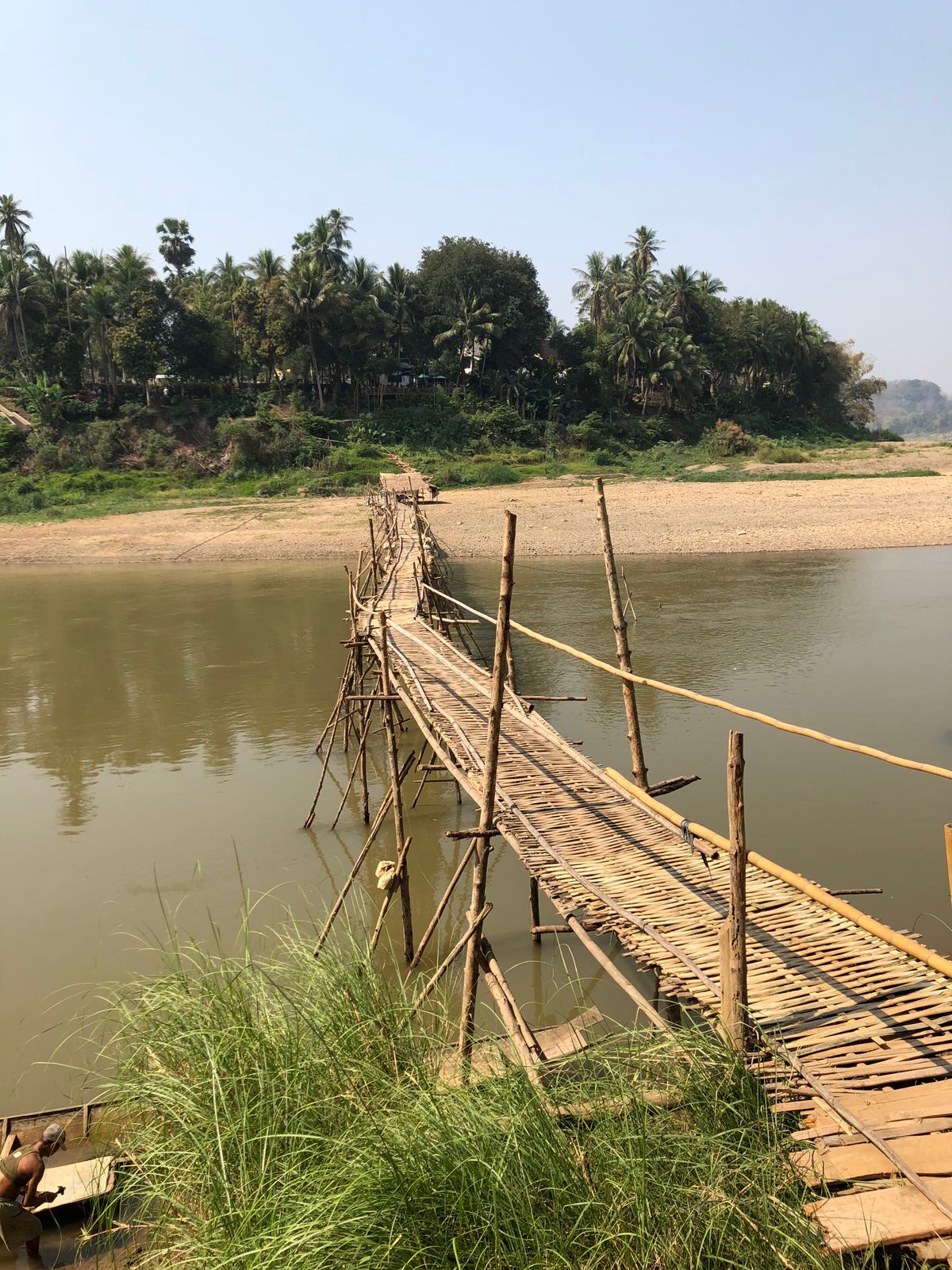About
Luang Prabang was named a UNESCO world heritage site for its well-preserved French colonial architecture, but its true charms spring from the Lao culture. The streets are filled with Saffron-robed monks, local handicrafts, Buddhist temples, and hawker stalls selling river fish and sticky rice. Visitors flock to the old town's famous Sai Bat almsgiving—a daily tradition unbroken for hundreds of years, but those who go wandering after the ceremony might discover a new tradition a short walk away—the seasonal bamboo bridges across the Nam Khan River.
The Nam Khan winds through Luang Prabang before joining the wide Mekong, and during the rainy season residents and visitors use shuttle boats or the Old French Bridge to cross the swollen river. But when the dry season comes along, quicker and more charming options arise—two narrow bamboo bridges. In 2006, a local family erected the twin bridges for the first time and they've kept the practice going every November since. Although the bridges are designed primarily for tourist use, the construction is very traditional. Each bridge is made entirely of bamboo and rope (except for the lights), and though they might look (and feel) wobbly, they’re actually quite strong. They rely on bamboo’s natural strength and building techniques employed by Laos for generations. The bridges span the Nam Kahn until rainy season, when they are dismantled until the next year.
The larger bridge, set at the picturesque bend of the Nam Khan just as it reaches the Mekong, connects Luang Prabang with two villages noted for their artisans—the weaver’s village of Ban Xieng Lek and the paper-making village of Ban Xiang Khong.
The smaller bridge is slightly upstream and connects the old city to the newer side of town, as well as to restaurants and craft shops overlooking the river. This side arguably has the best view; visitors who take the bridge to the Dyen Sabai restaurant at sunset are in for a beautiful view of the fleeting bamboo structure.
Related Tags
Know Before You Go
The larger bridge can be found at the bottom of the path starting below the Riverpoint Cafe on Khem Khong road. The smaller bridge extends from the old steps leading down from Wat Siphoutthabath on Kingkitsarath Road. Make sure you check with a hotel or tour guide if planning a visit to include the bridges; their presence follows the whims of the river. Note that traversing the bridges is not free. Tickets are sold at small booths on the old town side of each bridge. Passage costs 10,000 Kip (about sixty cents U.S.) for a round trip ticket. It’s a pittance well-spent — the money goes to the families who build and maintain the bridges.
Community Contributors
Added By
Published
December 14, 2022







































